Mexico is a huge and varied country, with lots to see. With so much history and culture, and different landscapes and environments, there’s plenty to keep you occupied when visiting this country. And so, it makes sense that there are numerous World Heritage Sites here. In fact, there are currently thirty-five UNESCO sites in Mexico. So if you want to base a trip around seeing these places, there’s certainly enough to go on.
What Is A UNESCO World Heritage Site?
A UNESCO World Heritage Site is an area or landmark that has legal protection by an international convention. This is organised by the United Nations Educational, Scientific and Cultural Organization or UNESCO for short. To be selected, a site must be unique in some way.
UNESCO sites are chosen for historical, scientific, cultural or other significance. These sites range from ancient ruins to unique landscapes. Moreover, the sites are classified as cultural sites, natural sites, or a mix of both.
In Mexico, there are twenty-seven cultural UNESCO World Heritage sites, six natural UNESCO sites and two that are a mix of cultural and natural significance.
The Best UNESCO World Heritage Sites In Mexico
Currently, Mexico has the seventh most UNESCO sites compared to other countries. So it would be rather difficult to see them all in one trip, as some are rather spread out! To make it easier to choose which to see, I’ve put together a list of my favourites.
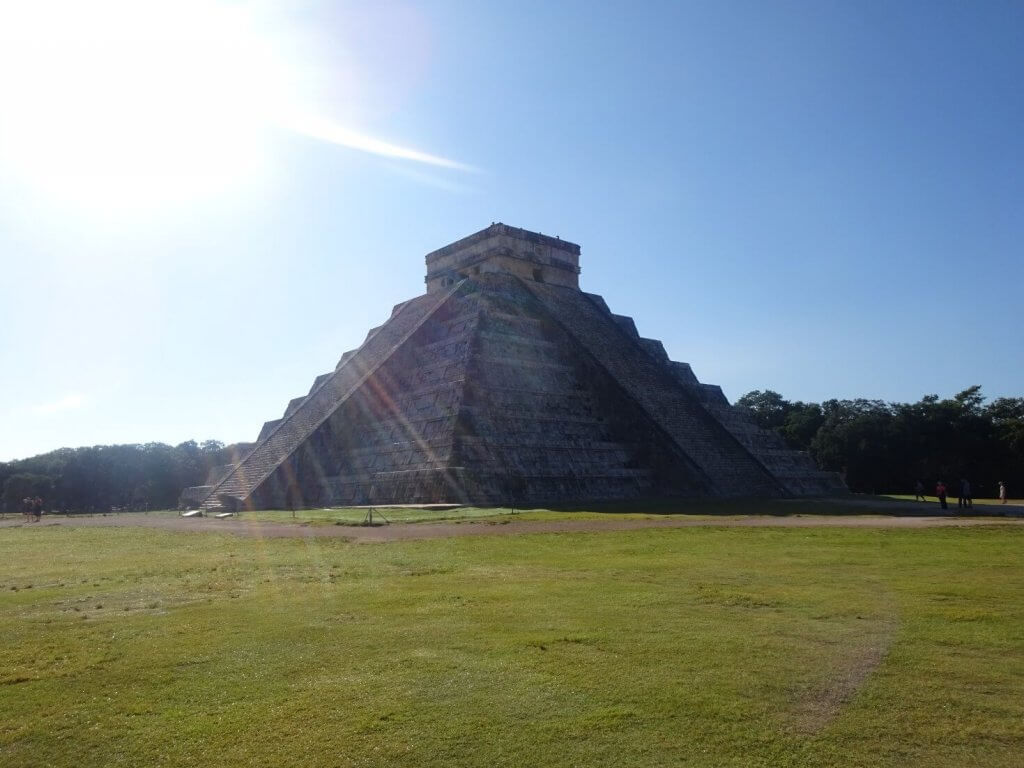

Chichen Itza Is Probably The Best Known UNESCO Site In Mexico
You’ll probably notice that Chichen Itza is conspicuous by its absence. I am by no means saying it is not an incredible UNESCO Site. However, it is probably the most well-known and most visited. So I don’t think I need to have it on this list to encourage you to see it. Chances are, if you’re going to Mexico, you’re visiting Chichen Izta. Hence, why you will not find it in this list.
There’s so much more to Mexico than Chichen Itza, Cancun and Playa del Carmen, find out Why You Should Explore More Of Mexico and before you go, don’t forget to read my Mexico Travel Tips
So, discounting Chichen Itza, and in no particular order, here are 15 of the best UNESCO sites in Mexico you should visit:
1. The Historic Centre Of Mexico City And Xochimilco
Mexico City has gained UNESCO status due to its rich history and mix of cultures. The Aztecs built their capital here, on a small island on the Lake of Texcoco. Later, the conquering Spaniards built the capital of “New Spain” over the pre-Hispanic ruins.
Now Mexico City has become one of the largest and is also one of the most densely populated cities in the world. With five Aztec Temples, the largest cathedral on the continent, El Zócalo and beautiful 19th- and 20th- century public buildings, the mix of old and new comes together in a riot that astounds the senses.
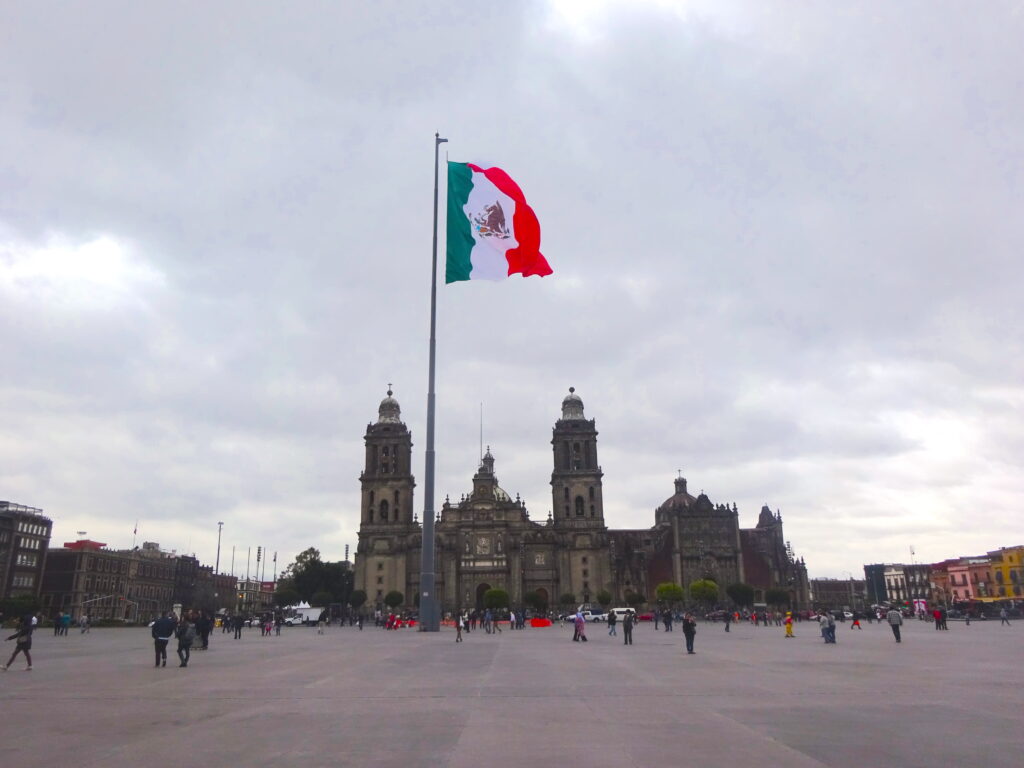

The Zocalo And Cathedral At Mexico City
Why not take a walking tour of Mexico City, like this one to discover its history?
Xochimilco is found a little over 17 miles (28km) south of the city centre. This area is one of the only reminders of Prehispanic land use in the lagoons of the Mexico City Basin. There is a network of small canals and “floating gardens” with various attractions on them. This area is half man-made and half natural and parts of the area is an “ecological reserve”.
You can explore Xochimilco and more of Mexico City on this tour.
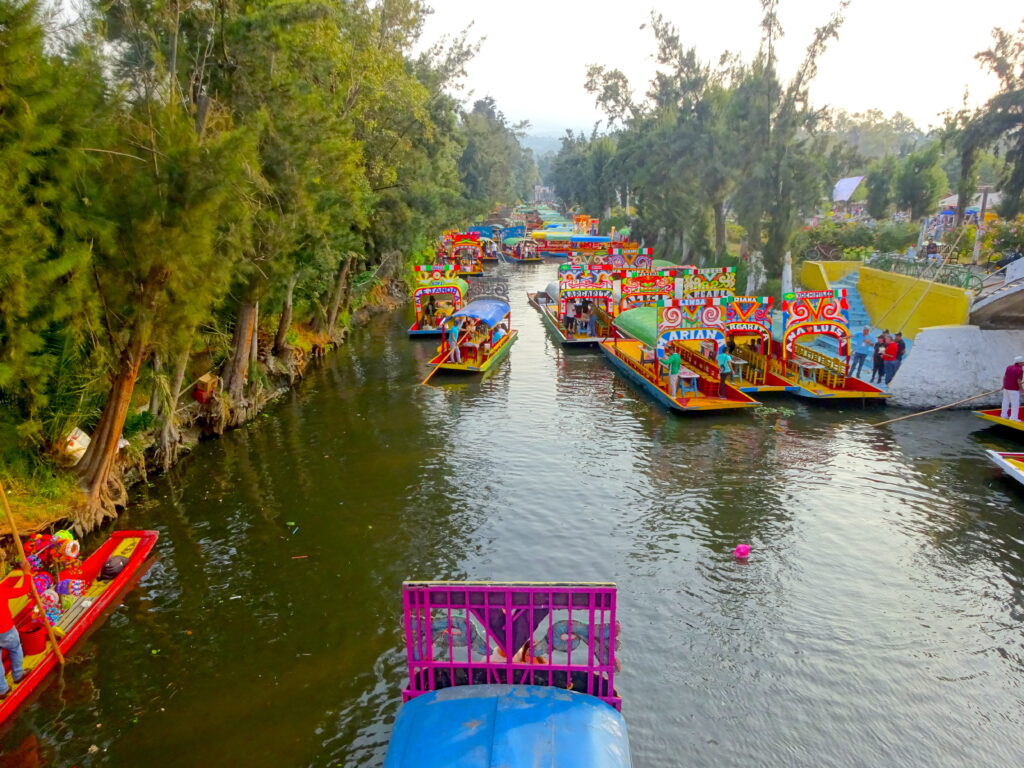

You Can Explore The Floating Gardens And Canals Of Xochimilco By Boat
If you have time, it’s well worth spending an extended period in Mexico City. There’s plenty to see in the city and loads of day trips you can do to the surrounding area. Check out accommodation on HostelWorld.
2. The Historic Centre of Oaxaca And The Archeological Site Of Monte Alban
Another UNESCO site in Mexico that is essentially two-in-one, is the Historic Centre of Oaxaca and the Archeological Site of Monte Alban.
The city centre of Oaxaca is set in a deep valley between two mountain ranges in the state of Oaxaca. Set out in a grid formation the city is an example of Spanish Colonial town planning. The iconic architecture of the city is representative of over 400 years of art and history. Within the city, you can find 1,200 historic monuments, including major religious monuments and 19th-century buildings including the birthplace of Benito Juarez. The buildings of Oaxaca are characterised by their thick walls and low heights. They are built this way due to the city being located in an earthquake zone.
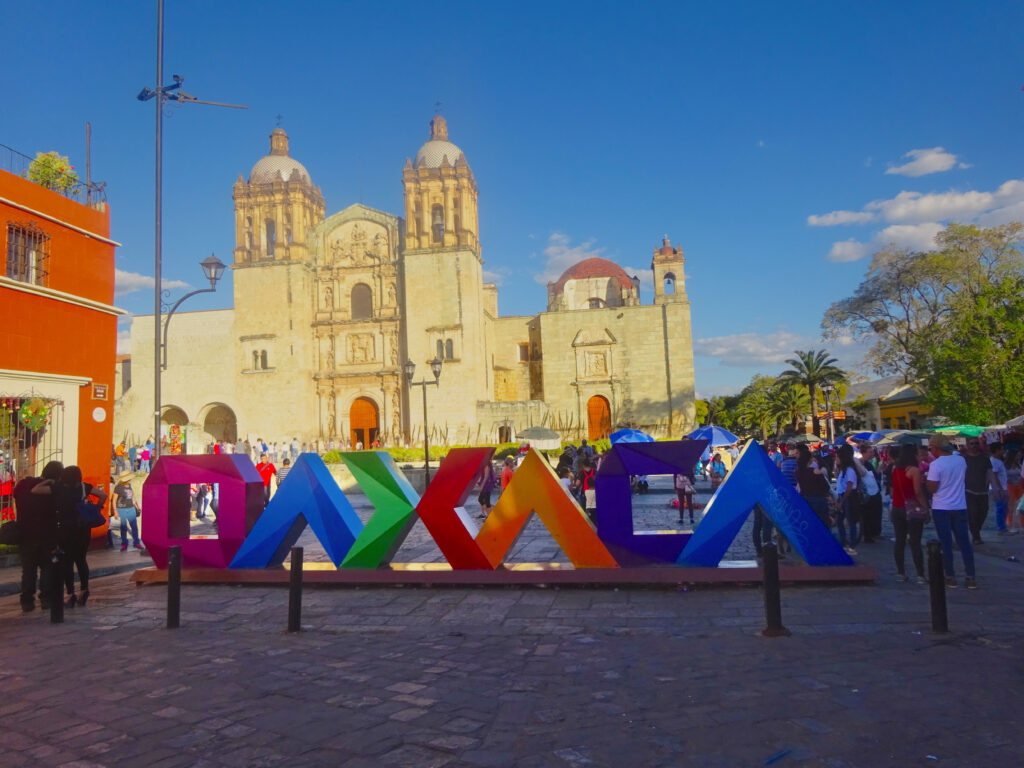

Get to know the beautiful city of Oaxaca on this walking tour.
Not far from the city of Oaxaca, you can find Mont Alban. These ruins are a legacy of advanced Zapotec culture and were founded around 500BC. Since then the site was occupied by a variety of people. One of the most important archaeological sites in Oaxaca, the dams, pyramids and terraces were literally carved into the mountains. One of the main draws of this site is to see the danzante figures (the dancers), which are carved into stone.
You can easily catch a bus from the city of Oaxaca to Monte Alban, or you can take a tour, like this one, so that you have a guide to tell you about the ruins.
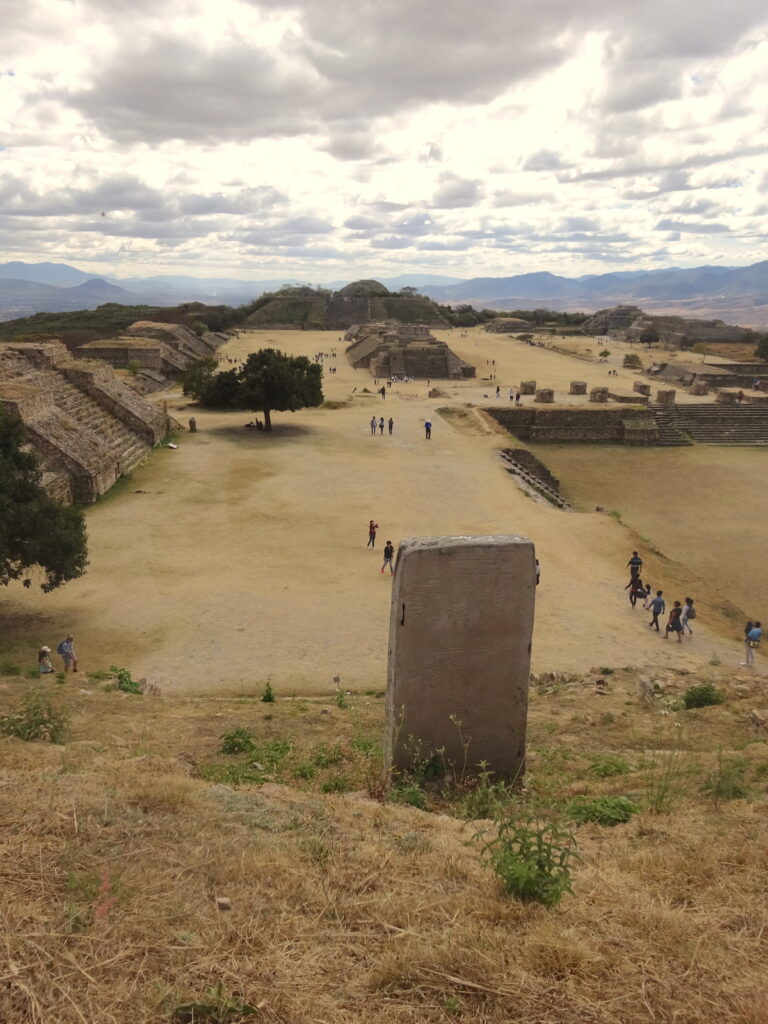

Monte Alban Was Literally Carved Into The Mountains
Oaxaca and the surrounding area is definitely worth spending some time exploring! Check out available accommodation on HostelWorld. Personally, I loved staying at Hostal Luz de Luna Nayoo.
If you love visiting ancient ruins, check out my favourite archaeological sites in Mexico.
3. Pre-Hispanic City of Teotihuacán
Located 50km northeast of Mexico City, the UNESCO site of Teotihuacán is known for the Pyramids of the Sun and Moon. The size of these monuments is a main characterising feature of the site.
The name Teotihuacán translates as “the place where the gods were created” and was built between the 1st and 7th centuries AD. The urban plan of this ancient city incorporated natural elements of the valley.
Teotihuacán was a holy city and one of the most powerful cultural centres in Mesoamerica. Because of this, its cultural and artistic influence spread throughout the region and beyond.


The Pyramids At Teotihuacán Are Known For Their Size
You can easily get to Teotihuacán from Mexico City’s Terminal de Norte, where buses are fairly regular to the site.
Alternatively, there are plenty of tours available, like this private tour of the site.
Or for something a little different, check out this tour of Teotihuacán by bike.
Teotihuacán is most easily accessed from Mexico City. So if you want to visit, find somewhere to stay in Mexico City with HostelWorld.
4. Sian Ka’an
One of the natural UNESCO sites in Mexico, Sian Ka’an is found on the east coast of the Yucatán Peninsula, just south of Tulum. In the Mayan language of the people who once inhabited the region, the name means “Origin of the Sky”.
This biosphere reserve is one of the largest protected areas in Mexico, covering 1.3 million acres. It is sparsely populated and most of the permanent residents are fishermen and farmers. The reserve contains all three of the principal ecosystems of the area: tropical forest; fresh- and saltwater mangroves; and marine waters with barrier reefs. These ecosystems are home to over 300 species of birds and some characteristic vertebrates such as manatees, four species of marine turtle and jaguars.
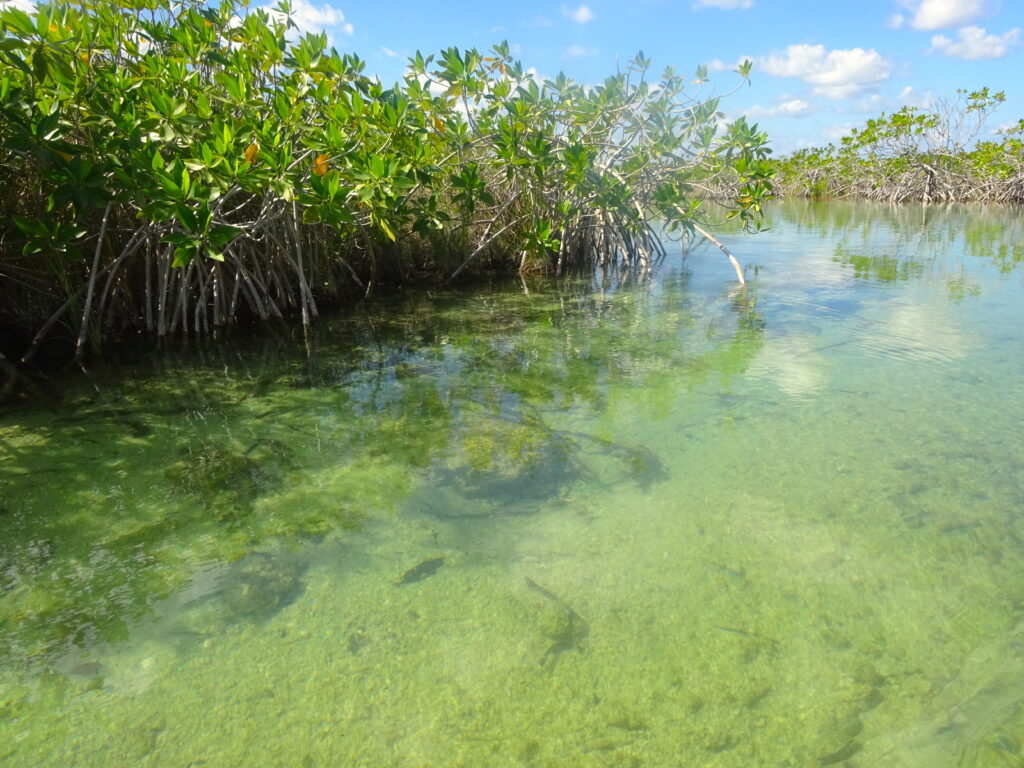

Mangroves Are Just One Environment At Sian Ka’an
Although you can enter the biosphere of Sian Ka’an unaccompanied, it is much more beneficial to take a tour. This is because you need to hire a boat to get fully into the reserve.
If you love exploring natural places, check out my favourite natural places in Mexico
The nearest town to Sian Ka’an is Tulum. This town is an awesome place to stay and there’s plenty to explore in the area, such as the Tulum Ruins. Find accommodation in Tulum on HostelWorld.
Check out the various tours available on Get Your Guide.
5. The Historic Town Of Guanajuato And Adjacent Mines
The town of Guanajuato was founded by the Spanish in the 16th century and had become the world’s leading silver extracting centre by the 18th century. For centuries, this was the wealthiest city in Mexico.
Found in a deep ravine, the city is a riot of colour and colonial architecture. Due to the prosperity of the mines, the town has beautiful Neoclassical and Borque buildings, which have influenced the buildings of the rest of central Mexico. The Churches of La Compañía and La Valenciana are considered some of the most beautiful Barque architecture in Central and South America.
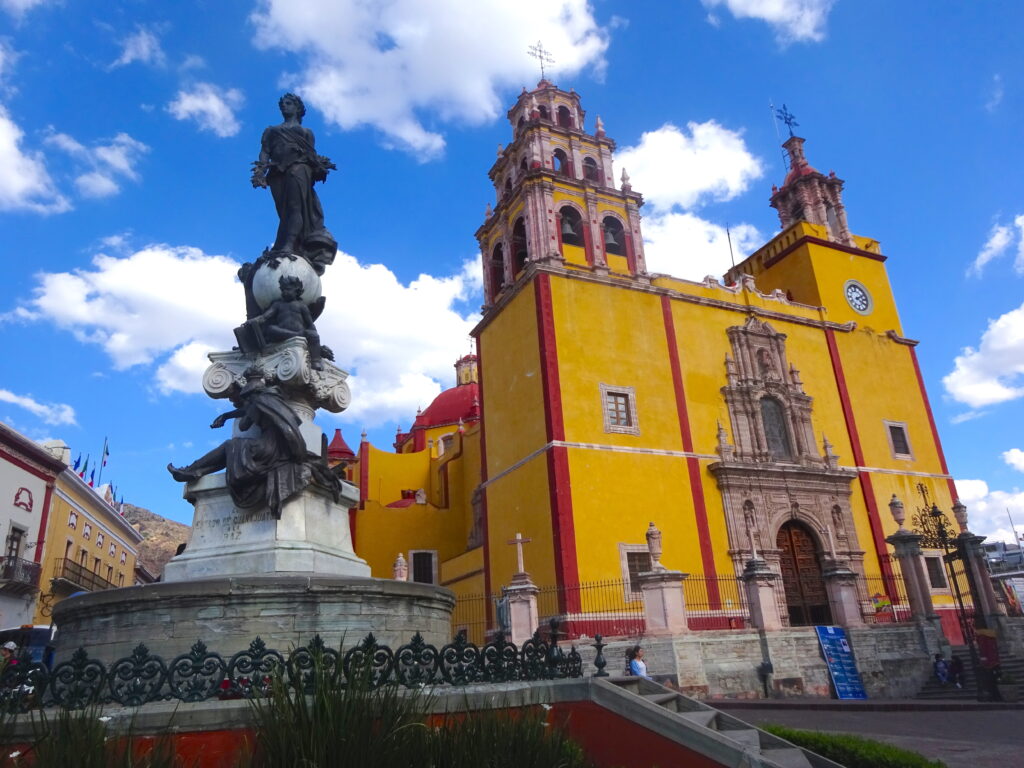

Basílica Colegiata de Nuestra Señora Is Just One Of The Beautiful Churches In Guanajanto
Guanajuato is protective of its image. You won’t find neon lights or traffic lights in the city. But there’s still plenty of life to be found in the narrow streets.
The town itself also has historical significance, as it was here that many events occurred that changed the history of the country. For instance, the Museo Regional de Guanajuato was the scene of the first real battle and some of the bloodiest fights in the War of Independence.
You can take a day trip to Guanajuato from San Miguel de Allende with Get Your Guide.
Alternatively, I would recommend staying in this beautiful city if you have the time. Find somewhere to stay with HostelWorld.
6. Ancient Maya City and Protected Tropical Forests of Calakmul
The tropical forests and ruins of Calakmul are a mixed UNESCO site, having natural and cultural value. The ancient city played an important role in the history of this region for more than twelve centuries, and the forest is a Mesoamerican biodiversity hotspot.
Take a look at my Adventures From Chetumal, which includes a trip to this UNESCO site.
This site is located in the core of the second-largest tropical forest in America and represents a unique adaptation to, and management of, a natural environment that would seem unsuited to urban development. As such, the mature forests are an example of long interaction between humans and nature. The forests are the results of Maya agricultural and forestry practices and show the combination of human selection and the regeneration of natural systems. Many endemic, and threatened, species call this forest their home, and the greatest diversity of mammals in the Mayan region is found here.
When it comes to the cultural aspect of this site, the ruins contain examples of Maya monumental architecture. Only partially uncovered, the ruins are still awe-inspiring. The whole site of the ruins is potentially the biggest archaeological area in Mexico, with nearly 7,000 buildings in the central area alone. There are also more steles and pyramids than any other sites.
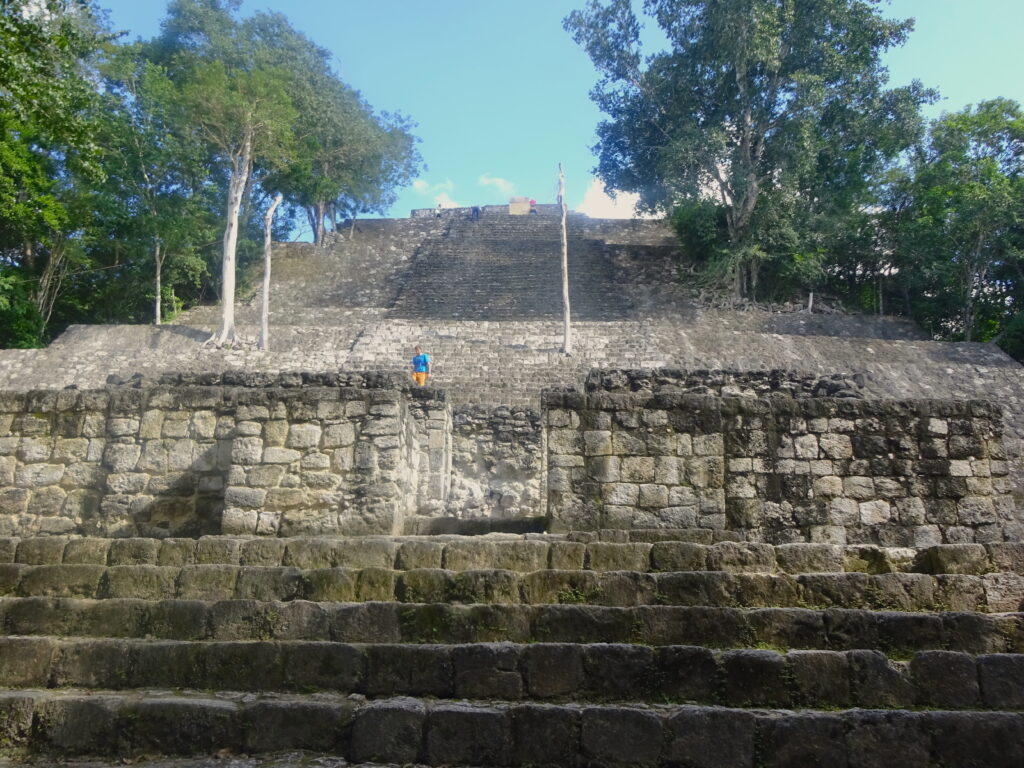

The Ruins At Calakmul Are Only Partially Uncovered
You can find out more in my post about the Calakmul Biosphere Reserve.
Being deep in the jungle, these ruins are not the easiest to get to. I did a trip from Chetumal, which makes a good base for exploring Calakmul and Bacalar. You can find accommodation in Chetumal on HostelWorld.
7. The Rock Paintings Of The Sierra De San Francisco
On the Baja Peninsula, in the mountain range of the Sierra de San Francisco, in the El Vizcaino Reserve, people once lived. These people lived between 100 B.C and 1300 A.D, and they left incredible rock paintings that are now a UNESCO site.
The rock art in Sierra de San Francisco has been well preserved because of the dry climate, and inaccessibility. Because of its isolated position, the people of central Baja were not influenced much by the continent. Therefore they developed a local cultural complex, which included a tradition of mass-produced rock art. The Sierra de San Francisco contains some of the best-preserved and incredible rock mural sites. This region is one of the largest prehistoric rock art sites in the world.
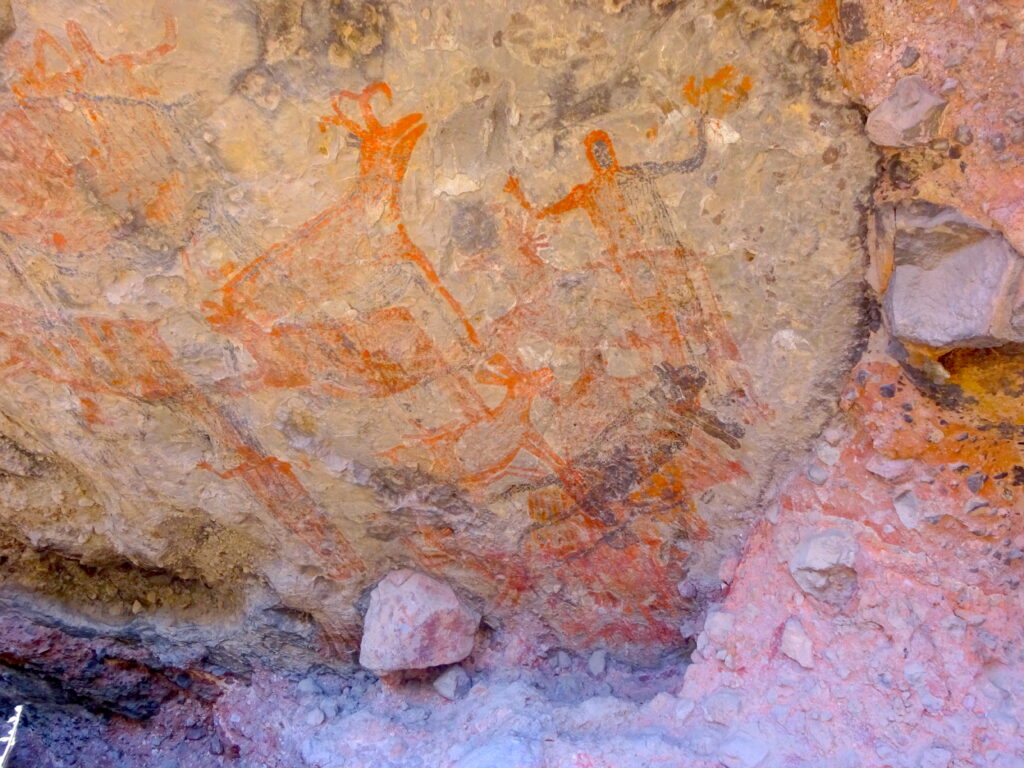

The Rock Paintings Of The Sierra De San Francisco Are Well Preserved
You can visit some of the sites, and you can make out figures of people and animals in the art, and the relationship of the people and their environment. The paintings are evidence of a highly sophisticated culture that was present in this area. The number of sites where the rock art can be found, the size, outlines, colours, and compositions, show a unique artistic tradition that was present in this region.
You can see some of these rock paintings from Loreto with this tour, though if you have the time I would recommend spending time in a town closer to the paintings.
8. Whale Sanctuary Of El Vizcaino
Another UNESCO site in the central part of Baja is the Whale Sanctuary of El Vizcaino. This site comprises two coastal lagoons, San Ignacio and Ojo de Liebre. These lagoons are wintering and reproductive sites for grey whales, northern elephant seals and more, as well as being home to four species of endangered marine turtles.
El Vizcaino is a Biosphere Reserve in itself and is Mexico’s largest protected area, but it is only the rock paintings above and these two lagoons and their surrounding areas that are UNESCO sites. These two lagoons are recognised as the world’s most important reproductive site for the Eastern subpopulation of the North Pacific grey whale. Here the whales breed and care for their young in these nurseries before they migrate to summer feeding grounds.


Ojo de Liebre Lagoon Is A Great Place To See The Whale Sanctuary UNESCO Site
The areas also contain some interesting ecosystems that support not only marine life but also migratory birds and terrestrial species.
I have seen tours that say they go to the UNESCO whale sanctuary, but do not actually go to either of the two lagoons, so when booking a whale watching tour be careful if you want to go to the actual UNESCO site. If you have the time I would recommend getting to Guerrero Negro and booking a tour with Mario’s Tours.
9. Pre-Hispanic Town of Uxmal
Uxmal was easily one of my favourite Mayan ruins in Mexico. Found on the Yucatán, south of Mérida, these ruins are in the centre of the Puuc region, which was once a centre for trade and the exchange of ideas. This UNESCO site in Mexico represents some of the finest achievements of this area before it fell into decline.
The town of Uxmal was founded around 700 A.D. and its’ layout is unique. Most prehispanic towns are laid out geometrically, but this is no so for Uxmal. Instead, the town is organised in a way that relates to astrological phenomena and adapted to the series of hills that make up the site.
Another unique part of these Mayan ruins is the Pirámide del Adivino (the Pyramid of the Magician, or Soothsayer). This pyramid dominates the ceremonial centre has an oval base, which is not seen in other Mayan ruins. The ceremonial centre comprises of well-designed building with many motifs and sculptures.
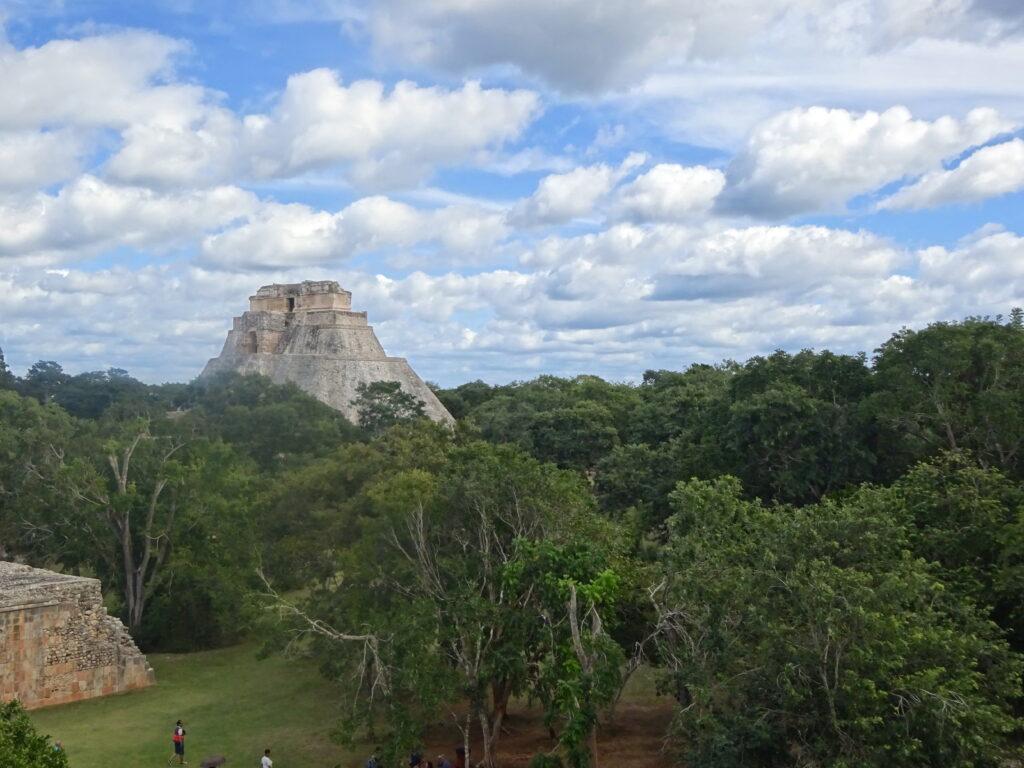

The Pyramid Of The Magician Is A Unique Pyramid At Uxmal
If you’re wanting to visit these unique ruins, you can do so on this tour for Mérida, which includes time at the ruins and the nearby chocolate factory.
Alternatively, it’s easy to catch the bus to Uxmal from Merida, it takes about an hour. However, if you take the bus, be sure you note the times of the buses back! Whether you choose a tour, or you get to Uxmal by yourself, the closest town is Mérida. Check out accommodation in Mérida on HostelWorld. Personally, I loved my time at La Casa del Tio Rafa.
10. Hospicio Cabañas
This hospice in Guadalajara was built in the 19th century to provide care and shelter to the disadvantaged. Hospicio Cabañas cared for orphans, the handicapped and the elderly. It may seem an unusual UNESCO site, compared to others, but it incorporates several interesting design features that were made to meet the needs of the occupants. Therefore, at the time of building, it was completely unique.
The Hospicio Cabañas was designed so that people could move freely around. There are open spaces, the building is a simple one-storey design and the light and airiness of the building were intended to promote healing. In the hospice, residents were able to learn a trade, which was also incorporated into the design. For example, the corridors were large enough to accommodate one of Guadalajara’s first printing press workshops.


Hospicio Cabañas Was A Shelter For The Disadvantaged
One of the main attractions of this UNESCO site in Mexico is the chapel. In the 1930s, this part of Hospicio Cabañas was decorated with frescos painted by José Clemente Orozco, who was one of Mexico’s leading muralists of the time. The art here is considered to be a masterpiece of Mexican art. In the frescos, you can see illustrations of both Spanish and Indigenous cultures.
Hospicio Cabañas is easy to find in Guadalajara, it’s just on the eastern side of Plaza Tapatía. I would definitely recommend spending a few days at least in Guadalajara, there’s plenty to do in and around this city. Find somewhere to stay on HostelWorld.
11. Pre-Hispanic City and National Park of Palenque
You’ve probably heard of Palenque, it’s definitely one of the ruins everyone wants to see when visiting Mexico. There are actually very few of the ancient buildings that are uncovered, the site of the ruins is a very small portion. The UNESCO site extends beyond this small section and is the Parque Nacional de Palenque.
Read about the time I visited Palenque on my tour with West Adventures
This UNESCO site is an example of the architecture of the Mayan Classical Period. Palenque shows one of the biggest achievements of mankind in the American continent. During its height, between 500 – 700 A.D., the influence of this city extended along the basin of the Usumacinta River, and it was a powerful capital.
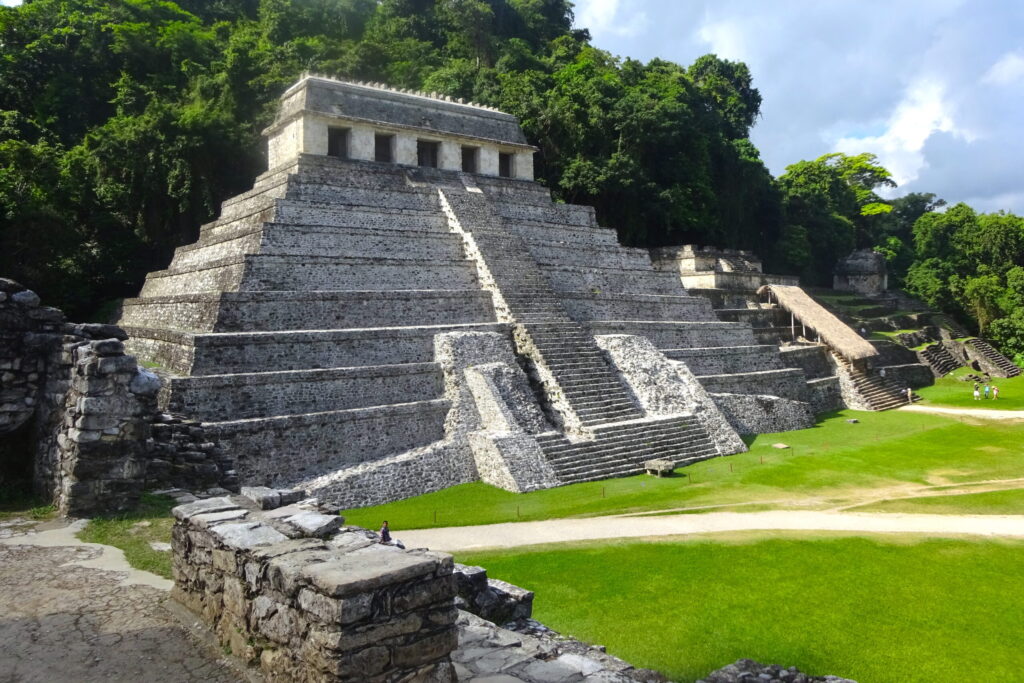

The Tomb Of The Red Queen Is One Of The Well-Known Pyramids Of Palenque
The Mayan art here is also an important feature. There are an incredible number of sculpted reliefs, which bear testimony to the mythology and rites of the Mayas.
There are plenty of tours that will take you to Palenque, that this one from San Cristobal.
Another option is to stay in Palenque, it’s easy enough to get to the ruins by collective from the town, or you can stay nearer the ruins. Check out accommodation in Palenque on HostelWorld.
12. Historic Fortified Town of Campeche
The town of Campeche was designed to defend the port from sea attacks that may come from the Caribbean. Founded in the 16th century, it is a typical example of the Spanish Colonial Period in the New World.
The town still has some of its old walls, which were built as a defensive measure. Campeche, like other port towns, was often attacked by pirates in the pay of enemies of Spain in the 16th century.
The city has immaculately preserved streets with a tranquil feel. The historic centre was built to a checkerboard street plan. Within the UNESCO are there are other 1,000 heritage buildings that include the Cathedral of the Immaculate Conception and the Toro Theatre. There are also a wealth of museums for the historic centre that is quite small, where you can learn about the city’s past.
You can easily take a tour to Campeche from easier-to-get-to places like Merida. Check out the tours available on Get Your Guide.
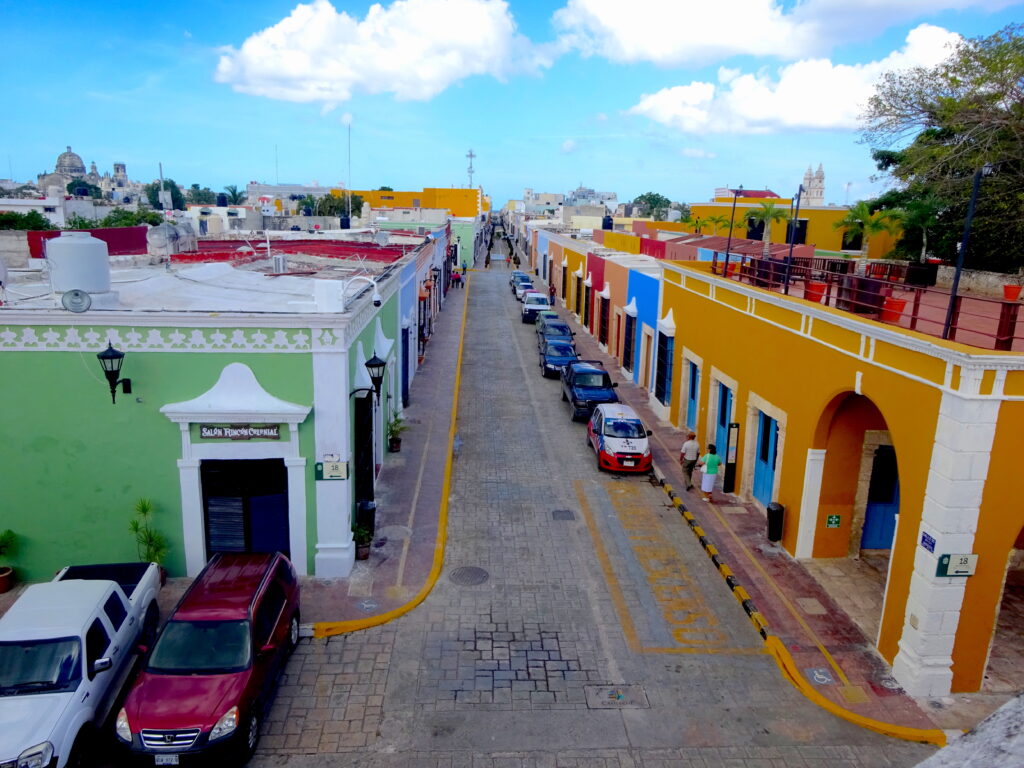

Campeche Is A Colourful Town
If you have the time, I would recommend staying in Campeche for a few days. There are plenty of museums in the city to occupy you, plus ruins that make a great day trip, and it’s a lovely laid back city. Find somewhere to stay on HostelWorld.
13. Central University City Campus of the Universidad Nacional Autónoma de México (UNAM)
This UNESCO site comprises the buildings, sports facilities and open spaces of the central campus of the Universidad Nacional Autónoma de México (UNAM).
Located in Mexico City, it took more than 60 architects, artists and engineers to complete this project, the building of which took place between 1949 and 1952. Because of this, the campus is a unique example of 20th-century modernism. The ensemble found here has become a significant icon of modern urbanism and architecture in Latin America.
One of the most arresting features here is the library. This twelve-storey building is covered with a mosaic designed by Juan O’Gorman. The mosaic shows the artists’ vision of Mexicos’ progression through history. The north and south facades focus on pre-Hispanic and colonial Mexico; the west wall shows the present day (at time of creation) and the coat of arms of the university; the east side symbolises the future. When you look at the building, it looks like there are no windows, as the mosaic has been designed to include the windows as an integral part.
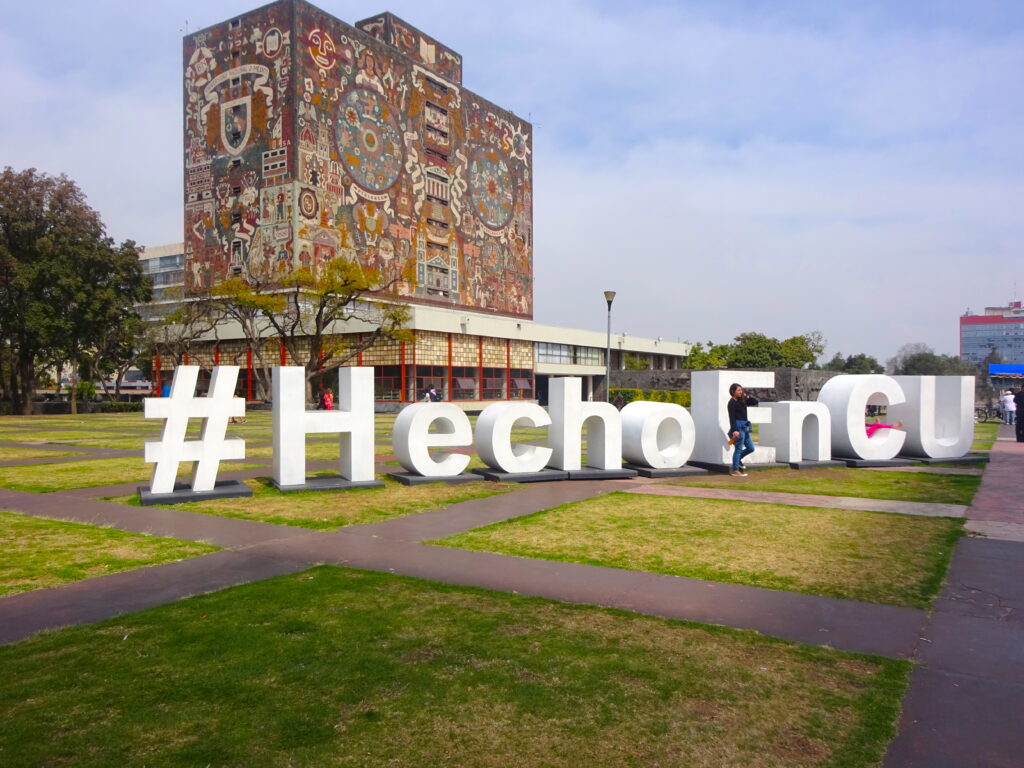

The Library Is The Most Noticeable Of Th Buildings At UNAM
Plenty of tours of Mexico City that include time at this UNESCO site. For instance, this tour includes UNAM, Frida Kahlo Museum and Coyoacan.
As there’s so much to see and do in the capital of Mexico, I would definitely recommend a few days to explore. Take a look at accommodation on HostelWorld.
14. Historic Monuments Zone of Querétaro
The colonial town of Querétaro has a layout that symbolises the multi-ethnic population. With a geometric street plan of the Spanish, next to the twisting alleys of the Indian Quarters.
Within the city, there are well-preserved religious and civil buildings. There are magnificent mansions and ecclesiastical architecture, as well as ornate civil and religious Baroque monuments. In fact, there are over 1,400 monuments in this UNESCO site. The buildings themselves are not technically exceptional, what makes them stand out and so become a UNESCO World Heritage Site, is the design and construction of a wide range of multilobate arches. This style is further enhanced by the use of “pink stone”.


Querétaro Has Many Monuments And Statues
Although Querétaro is only a few hours from Mexico City, it’s a pretty city and worth a few days if you have the time. There are also plenty of places in the region you can explore from this city, making it a good base. Take a look at accommodation here on HostelWorld, personally, I enjoyed staying at Séptimo Hostal.
15. El Tajín, Pre-Hispanic City
One of the most important centres in Mesoamerica after the fall of the Teotihuacán, El Tajín had a cultural influence that extended along the Gulf coast and is even seen in the Maya region. Found in the state of Veracruz, the city was at its height between the 9th and 13th centuries.
The extensive site is divided into two main areas, Tajín Viejo and Tajín Chico. El Tajín is one of the best-preserved examples of a Pre-Hispanic town of Epiclassic and Early Post Classic Periods. Furthermore, the site is characterised by elaborate carved reliefs and The Pyramid of Niches is a masterpiece of Mexican architecture.
You can visit the ruins of El Tajin from the city of Veracruz on this tour.
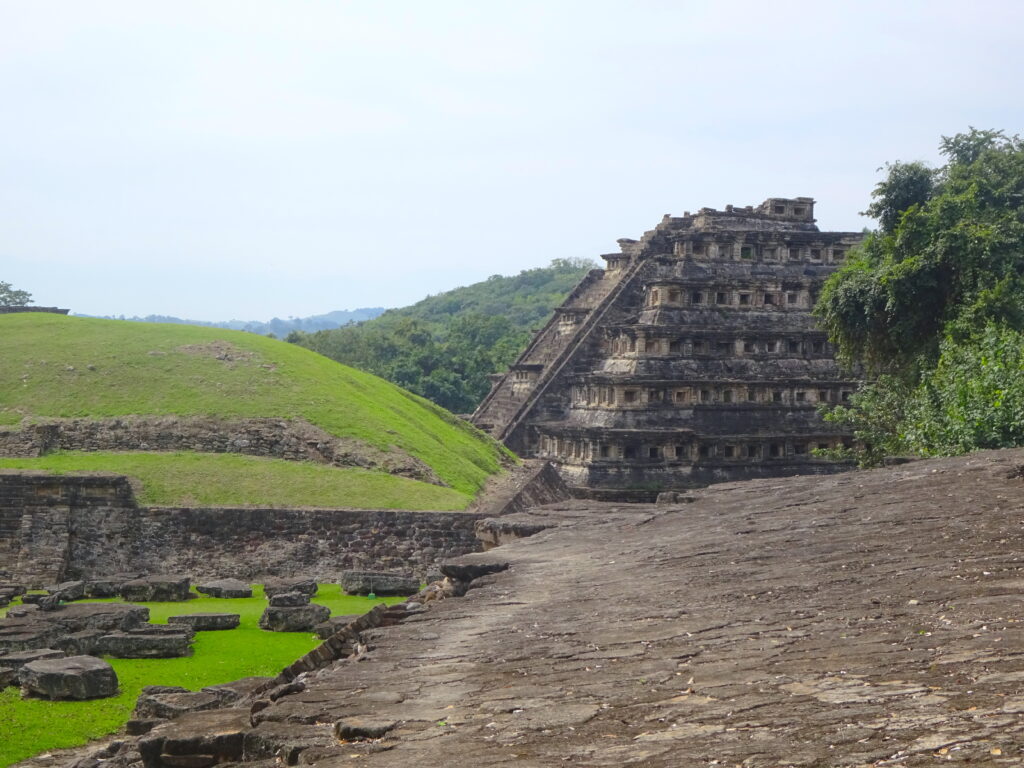

The Pyramid Of Niches Is Unique To El Tajin
Mexico definitely has a wealth of UNESCO World Heritage Sites that are worth exploring. The above are just. some of my favourites. You can access many of them independently, but if your pushed for time and want to see as much as possible, a tour like this one can take you to a number of sites in a few days.
If you’re looking for inspiration for travel in Mexico, check out these off the beaten path destinations in Mexico.
How many of the UNESCO sites in Mexico have you been to? Let me know your favourites in the comments below!
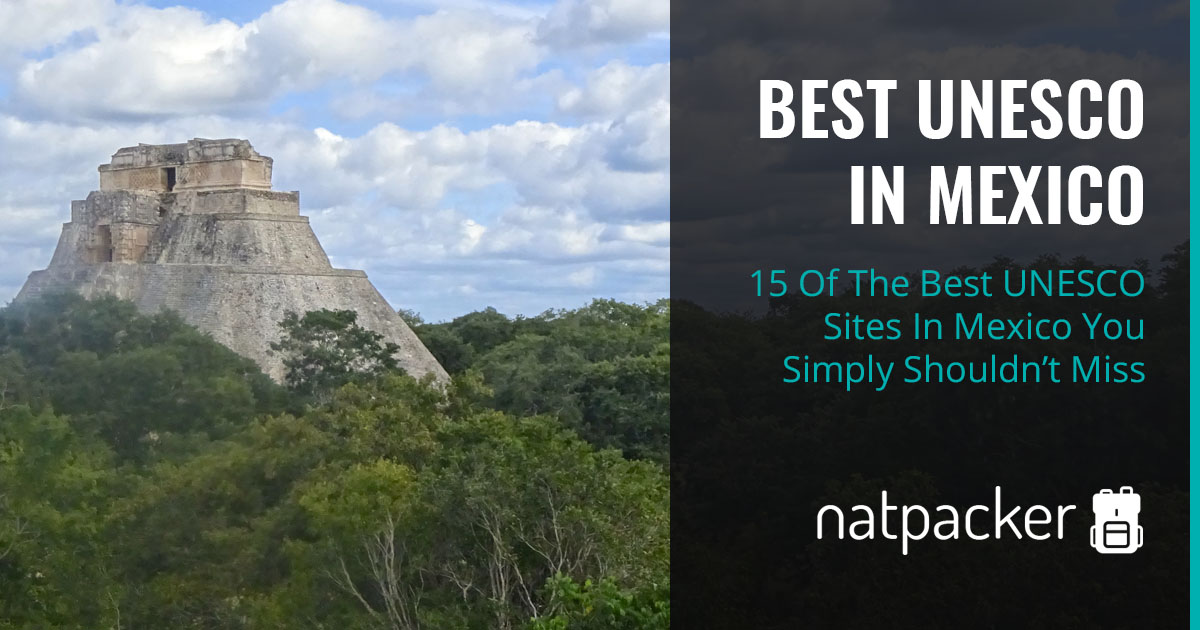

13 Comments
This is best UNESCO sites Mexico this is great information about the sites thanks sharing this article
Glad you liked the post 🙂
wow, this is really amazing and interesting article. thanks for sharing this wonderful article with us.
wow, i just love these places . thanks for sharing this wonderful article with us.
Glad you liked the post 🙂
Thank you for this detailed guide! Your insights into the UNESCO sites in Mexico are incredibly helpful and well-organized. I appreciate the clear breakdown of each site and the practical tips for visiting them. This will definitely make planning a trip to explore Mexico’s rich history and natural beauty much easier.
Thanks for your kind words. I’m glad you found my post helpful 🙂
This is such an inspiring and comprehensive exploration of Mexico’s UNESCO sites! The incredible variety of cultural and natural treasures highlighted truly captures the country’s rich history and stunning biodiversity. Thank you for showcasing lesser-known gems alongside iconic landmarks—it’s a reminder of just how much there is to discover in Mexico. Your detailed descriptions and tips make planning a visit to these awe-inspiring sites so much easier.
Thanks for your kind words! Glad you liked the post 🙂
Thank you so much for sharing this informative post! It’s clear how much effort you’ve put into detailing these UNESCO World Heritage Sites in Mexico. The mix of cultural history and natural beauty is inspiring, and I really appreciate the insights into places like Oaxaca, Teotihuacán, and Sian Ka’an.
Thanks! I’m glad you liked the post 🙂
Thank you for sharing such a detailed and insightful blog post! I truly appreciate how you’ve highlighted the richness of Mexico’s UNESCO World Heritage Sites, from its ancient ruins to vibrant cities. The descriptions of each location made me eager to explore these historical and cultural treasures. I’m especially excited to learn about places like Sian Ka’an and the Rock Paintings of Sierra de San Francisco. This guide is a wonderful resource for anyone planning a trip to Mexico! Keep up the great work!
Thanks so much for your kind words Jessie! Glad you found the post helpful, and I hope you get to visit some of these places soon 🙂